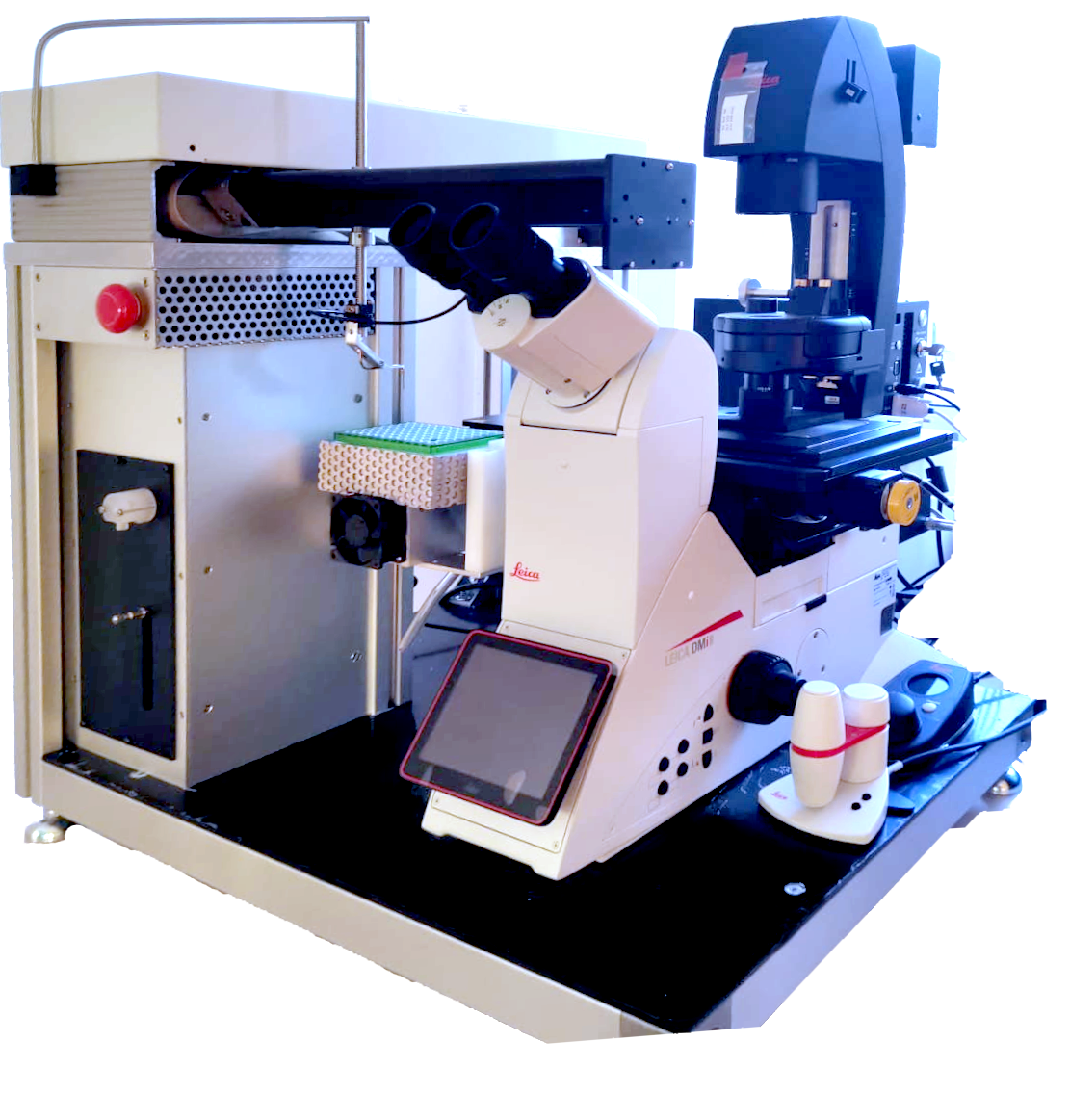BioDecipher®
Our passion is to decipher the language of life
Open and flexible ultra high content imaging for your bench
BioDecipher® BasisDevice
The BasisDevice is the core of the BioDecipher®s multiplex imaging platform. It is a liquid handling robot with a cooled storage for labeling reagents like antibodies. Due to the open controlling software you can implement your own pipetting schemes to implement different sequential techniques for multiplex imaging.
Parameters of its components:
- Liquid handling system
- xyz robot with steel needle (CAVRO OEM product, RSP9000)
- operating range x = 300mm, y = 383mm, z= 165mm
- up to two high precision dilutors can be installed
- one temperature controlled 96 plate deep well rack (for Eppendorf PCR plates)
- temperature range from 0 – 70°C (at 25°C ambient temperature)
- 0.1K temperature stability
- this rack is also available as OEM product
- any inverted and automated microscopic detection system is mountable
(Please ask BioDecipher for the list of compatible microscopes and camera systems) - size without microscope: width ~70cm, height ~70cm, depth ~55cm
BioDecipher® Device 1.0
BioDecipher® BasisDevice + detection system based on wide-field fluorescence microscopy = BioDecipher® Device 1.0 = Your fully equipped automated instrument for multiplexed imaging of any kind of fixed samples (from tissue to single cells). With our preferred multiplex imaging techniques Multi-Epitope-Ligand Cartography (MELC) you can use most of fluorescently labeled antibody on the market to decipher your biological question at the microscopic resolution from large field 2D scans with a 20x air lens to high resolution 3D scans with 63x oil lens (optical resolution down to 200nm in xy direction).
Our suggested hardware setup:
- BioDecipher ® BasisDevice with one diluter with an open liquid handling
- automated wide-field fluorescence microscope Leica DMi 8:
- fluorescence filter setup: DAPI, FITC, PE, APC
- Leica LED5 or Lumencor Aura III LED illumination as excitation light source
- using the transmitted light path for image registration enables you to use all fluorescence channels for your deciphering process
- Hamamatsu Orca Flash 4.0v3 as sensitive scientific CMOS camera
The Device
